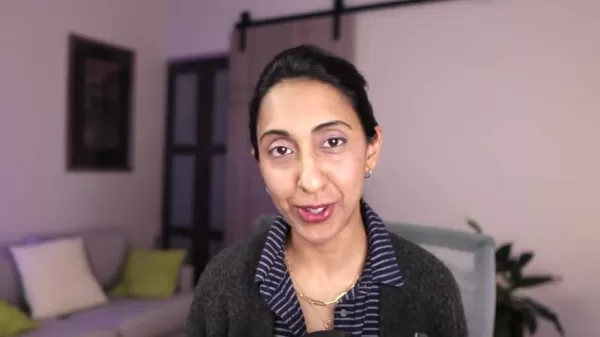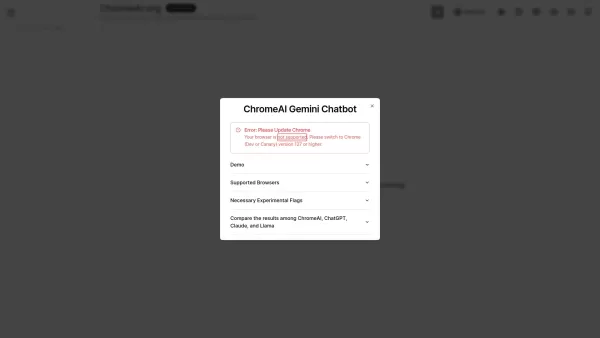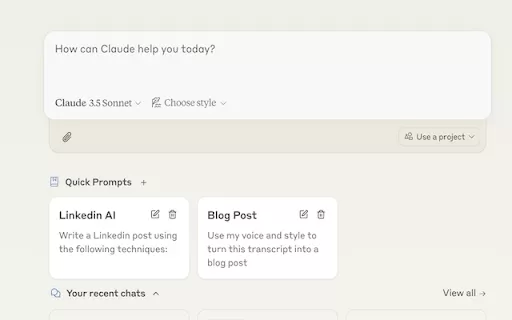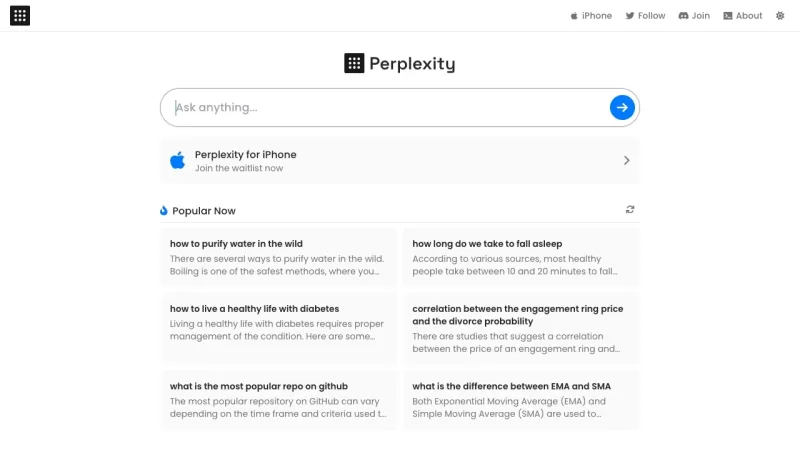Exploring Synths and Vocoders in the Sky Full of Lighters Sound

 April 25, 2025
April 25, 2025

 BruceGarcía
BruceGarcía

 0
0
The track 'Sky Full of Lighters' stands out for its innovative use of electronic elements, particularly the vocoder effect on the vocals. This article explores the techniques used to craft this distinctive sound, delving into the synths, effects, and mixing strategies that contribute to the track's unique sonic texture. Whether you're a seasoned producer or just starting out, understanding these elements can significantly enhance your approach to electronic music production.
Key Points
- The vocoder is central to the track's vocal sound.
- Specific synth sounds build the main melody and harmonic foundation.
- Mixing techniques enhance the clarity and impact of the electronic elements.
- Creative effects add unique textures.
Decoding the Vocal Sound
The Magic of Vocoders
A vocoder, or voice encoder, is a fascinating tool that synthesizes human voice by analyzing an input signal and applying it to a carrier signal, resulting in speech-like sounds. It's a fantastic way to manipulate and shape vocals, giving them a robotic, synthetic edge that's become a hallmark of artists like Kraftwerk, Daft Punk, and Laurie Anderson. Vocoders work by breaking down the frequency content of an audio signal (usually a vocal) and using that spectral information to modulate a synthesizer or other sound source. Essentially, the vocal provides the articulation, while the synthesizer adds the tonal color, creating a sound that retains the voice's intelligibility while taking on the character of a synth.

Here's a simple breakdown of how a vocoder works:
- Analysis: The vocoder analyzes the input signal (the human voice) and breaks it down into a series of frequency bands.
- Modulation: Each frequency band modulates a corresponding band in the carrier signal (the synthesizer sound), causing the synthesizer's frequencies to mimic the vocal's frequencies.
- Synthesis: The modulated carrier signal is then synthesized, resulting in a hybrid sound that combines elements of both the voice and the synthesizer.
The key to achieving a great vocoder sound lies in choosing the right carrier signal and fine-tuning the vocoder's parameters, such as the number of bands, sensitivity, and release time. Experimentation is crucial to finding the perfect balance between intelligibility and synthesis. By creatively using vocoders, you can make vocals stand out and deliver truly unique sonic textures.
Crafting Synth Sounds: Melody and Harmony
Exploring the Sonic Landscape
The synths in 'Sky Full of Lighters' play a significant role in the track's popularity, creating a rich sonic landscape. The main melody leads the musical line, while various synths provide depth and support. The melody is crafted with a carefully chosen synth, with other synths contributing to basslines and harmonic elements.
One effective technique for ensuring synths are clearly heard is EQ. By carefully EQing, producers can avoid frequency masking, which involves cutting specific frequencies in one sound to allow another to stand out. This is particularly important in dense mixes where many synths occupy similar frequency ranges. Consider using high-pass filters on synths that don't need the low end, or notch out competing frequencies in the mid-range.
Compression can also help maintain the consistency and impact of synths. Applying compression smooths out the dynamics of a synth, helping it sit better in the mix and preventing it from being buried. Sidechain compression, where the synth's volume is ducked slightly in response to another sound (like the kick drum), can create a rhythmic pumping effect.
Panning is often overlooked but essential for separating sounds in a stereo field. Placing synths on different sides of the stereo spectrum can create a sense of width and space, preventing them from clashing in the center of the mix. Experiment with panning to create a more immersive listening experience. These mixing strategies can significantly improve the quality of a song.
Techniques for Vocal Enhancement
Adding Unique Vocal Textures
- Layering and Doubling:
- Layering multiple vocoded vocals can create a thicker, more complex sound. Use slightly different settings on each vocoder to add variation and prevent the layers from sounding too similar.
- Doubling the vocoded vocal with a clean, unprocessed vocal can enhance the overall clarity and intelligibility of the vocal performance. Adjust the levels carefully to find the right balance between the synthetic and natural elements.
- Creative Effects:
- Experiment with adding effects like chorus, delay, and reverb to the vocoded vocal to further enhance its texture and space. A subtle chorus can add width and depth, while delay and reverb can create a sense of ambience and atmosphere.
- Consider using modulation effects, such as flangers and phasers, to create movement and interest in the vocoded vocal. Be careful not to overdo it, as these effects can easily become overwhelming.
- Automation:
- Automation can be used to create dynamic changes in the vocoder's parameters, such as the number of bands, sensitivity, and release time. This can add movement and interest to the vocoded vocal, preventing it from sounding static or repetitive.
- Automate the levels of the effects you've added to the vocoded vocal to create subtle shifts in texture and space throughout the track.

Synthesizer vs Vocoder
Pros
- Synthesizers can generate an infinite range of sounds.
- Vocoders can transform existing vocals for creative effects.
- Both add distinct flavors to the final mix.
Cons
- Synthesizers may require a deep understanding of sound design.
- Vocoders can sometimes sound artificial or robotic.
- Both can be misused if not properly mixed.
Frequently Asked Questions
What is a vocoder and how does it work?
A vocoder is a voice encoder that synthesizes human voice based on an analyzing signal and a carrier signal to produce speech-like sounds. It works by analyzing the frequency content of an audio signal (usually a vocal) and applying that spectral information to a synthesizer or other sound source. The vocoder breaks down the input signal into frequency bands and modulates a carrier signal, synthesizing a hybrid sound.
How can EQ help separate sounds in a mix?
EQ can help separate different sounds within a music mix and avoid the problem of frequency masking by adjusting their frequencies. This can involve cutting specific frequencies in one instrument or sound to give more space for another, or making other alterations as necessary.
Related Questions
What are some additional mixing techniques to create professional mixes?
Creating professional mixes is essential for ensuring music sounds its best and competes effectively in today's audio landscape. By utilizing techniques such as setting the levels correctly, panning, EQ, compression, and reverb, you can provide a professional output for your music.
Level Setting: Start by setting the levels of the music correctly. This is the key to a balanced mix, where all the different parts can be heard clearly without any individual sounds being too quiet or too loud.
Panning: Panning is a technique used to create a sense of width and directionality within the stereo mix. Producers should ensure each element has its distinct place in the overall soundscape, as this is crucial for achieving clarity and definition within the mix.
Equalization (EQ): This is the process of adjusting the frequency content of individual tracks and is vital for eliminating unwanted sounds to help the different musical parts fit together harmoniously. EQ can enhance sounds and is an indispensable technique that music producers should be fluent in.
Compression: Compression is used to reduce the dynamic range of sounds in the mix. Sounds like vocals, basslines, and drums are often compressed, which ensures consistent levels and helps to make them more powerful, and to help them sound good when played on a variety of systems.
Reverb & Delay: Reverb and delay effects add depth and space to the mix. These effects help create a sense of ambience and are used by producers to simulate different acoustic environments, making the listener feel like they are there. Experimenting with these to create unique soundscapes can be beneficial and is often overlooked.
Related article
 Wizrd Autodesigner 2.0 Unveiled: A Comprehensive Review of the AI-Driven UI Design Tool
In the dynamic world of UI design, Artificial Intelligence is increasingly playing a pivotal role, and Wizrd Autodesigner 2.0 stands out as a game-changer. This AI-powered platform promises to revolutionize how designers work, streamlining workflows and enhancing creativity. Let's delve into a detai
Wizrd Autodesigner 2.0 Unveiled: A Comprehensive Review of the AI-Driven UI Design Tool
In the dynamic world of UI design, Artificial Intelligence is increasingly playing a pivotal role, and Wizrd Autodesigner 2.0 stands out as a game-changer. This AI-powered platform promises to revolutionize how designers work, streamlining workflows and enhancing creativity. Let's delve into a detai
 'Degraded' Synthetic Faces May Enhance Facial Recognition Technology
Researchers at Michigan State University have come up with an innovative way to use synthetic faces for a noble cause—enhancing the accuracy of image recognition systems. Instead of contributing to the deepfakes phenomenon, these synthetic faces are designed to mimic the imperfections found in real-
'Degraded' Synthetic Faces May Enhance Facial Recognition Technology
Researchers at Michigan State University have come up with an innovative way to use synthetic faces for a noble cause—enhancing the accuracy of image recognition systems. Instead of contributing to the deepfakes phenomenon, these synthetic faces are designed to mimic the imperfections found in real-

Top 10 Reasons AI Became Mainstream Overnight - Future Implications Explored
The Rapid Rise of Generative AI: A Game-Changer in Technology
It's been a whirlwind, hasn't it? Generative AI, with tools like ChatGPT, burst onto the scene in early 2023, transforming the tech landscape almost overnight. It's like we've stumbled upon some alien tech from a Stargate episode—except
Comments (0)
0/200

 April 25, 2025
April 25, 2025

 BruceGarcía
BruceGarcía

 0
0
The track 'Sky Full of Lighters' stands out for its innovative use of electronic elements, particularly the vocoder effect on the vocals. This article explores the techniques used to craft this distinctive sound, delving into the synths, effects, and mixing strategies that contribute to the track's unique sonic texture. Whether you're a seasoned producer or just starting out, understanding these elements can significantly enhance your approach to electronic music production.
Key Points
- The vocoder is central to the track's vocal sound.
- Specific synth sounds build the main melody and harmonic foundation.
- Mixing techniques enhance the clarity and impact of the electronic elements.
- Creative effects add unique textures.
Decoding the Vocal Sound
The Magic of Vocoders
A vocoder, or voice encoder, is a fascinating tool that synthesizes human voice by analyzing an input signal and applying it to a carrier signal, resulting in speech-like sounds. It's a fantastic way to manipulate and shape vocals, giving them a robotic, synthetic edge that's become a hallmark of artists like Kraftwerk, Daft Punk, and Laurie Anderson. Vocoders work by breaking down the frequency content of an audio signal (usually a vocal) and using that spectral information to modulate a synthesizer or other sound source. Essentially, the vocal provides the articulation, while the synthesizer adds the tonal color, creating a sound that retains the voice's intelligibility while taking on the character of a synth.

Here's a simple breakdown of how a vocoder works:
- Analysis: The vocoder analyzes the input signal (the human voice) and breaks it down into a series of frequency bands.
- Modulation: Each frequency band modulates a corresponding band in the carrier signal (the synthesizer sound), causing the synthesizer's frequencies to mimic the vocal's frequencies.
- Synthesis: The modulated carrier signal is then synthesized, resulting in a hybrid sound that combines elements of both the voice and the synthesizer.
The key to achieving a great vocoder sound lies in choosing the right carrier signal and fine-tuning the vocoder's parameters, such as the number of bands, sensitivity, and release time. Experimentation is crucial to finding the perfect balance between intelligibility and synthesis. By creatively using vocoders, you can make vocals stand out and deliver truly unique sonic textures.
Crafting Synth Sounds: Melody and Harmony
Exploring the Sonic Landscape
The synths in 'Sky Full of Lighters' play a significant role in the track's popularity, creating a rich sonic landscape. The main melody leads the musical line, while various synths provide depth and support. The melody is crafted with a carefully chosen synth, with other synths contributing to basslines and harmonic elements.
One effective technique for ensuring synths are clearly heard is EQ. By carefully EQing, producers can avoid frequency masking, which involves cutting specific frequencies in one sound to allow another to stand out. This is particularly important in dense mixes where many synths occupy similar frequency ranges. Consider using high-pass filters on synths that don't need the low end, or notch out competing frequencies in the mid-range.
Compression can also help maintain the consistency and impact of synths. Applying compression smooths out the dynamics of a synth, helping it sit better in the mix and preventing it from being buried. Sidechain compression, where the synth's volume is ducked slightly in response to another sound (like the kick drum), can create a rhythmic pumping effect.
Panning is often overlooked but essential for separating sounds in a stereo field. Placing synths on different sides of the stereo spectrum can create a sense of width and space, preventing them from clashing in the center of the mix. Experiment with panning to create a more immersive listening experience. These mixing strategies can significantly improve the quality of a song.
Techniques for Vocal Enhancement
Adding Unique Vocal Textures
- Layering and Doubling:
- Layering multiple vocoded vocals can create a thicker, more complex sound. Use slightly different settings on each vocoder to add variation and prevent the layers from sounding too similar.
- Doubling the vocoded vocal with a clean, unprocessed vocal can enhance the overall clarity and intelligibility of the vocal performance. Adjust the levels carefully to find the right balance between the synthetic and natural elements.
- Creative Effects:
- Experiment with adding effects like chorus, delay, and reverb to the vocoded vocal to further enhance its texture and space. A subtle chorus can add width and depth, while delay and reverb can create a sense of ambience and atmosphere.
- Consider using modulation effects, such as flangers and phasers, to create movement and interest in the vocoded vocal. Be careful not to overdo it, as these effects can easily become overwhelming.
- Automation:
- Automation can be used to create dynamic changes in the vocoder's parameters, such as the number of bands, sensitivity, and release time. This can add movement and interest to the vocoded vocal, preventing it from sounding static or repetitive.
- Automate the levels of the effects you've added to the vocoded vocal to create subtle shifts in texture and space throughout the track.

Synthesizer vs Vocoder
Pros
- Synthesizers can generate an infinite range of sounds.
- Vocoders can transform existing vocals for creative effects.
- Both add distinct flavors to the final mix.
Cons
- Synthesizers may require a deep understanding of sound design.
- Vocoders can sometimes sound artificial or robotic.
- Both can be misused if not properly mixed.
Frequently Asked Questions
What is a vocoder and how does it work?
A vocoder is a voice encoder that synthesizes human voice based on an analyzing signal and a carrier signal to produce speech-like sounds. It works by analyzing the frequency content of an audio signal (usually a vocal) and applying that spectral information to a synthesizer or other sound source. The vocoder breaks down the input signal into frequency bands and modulates a carrier signal, synthesizing a hybrid sound.
How can EQ help separate sounds in a mix?
EQ can help separate different sounds within a music mix and avoid the problem of frequency masking by adjusting their frequencies. This can involve cutting specific frequencies in one instrument or sound to give more space for another, or making other alterations as necessary.
Related Questions
What are some additional mixing techniques to create professional mixes?
Creating professional mixes is essential for ensuring music sounds its best and competes effectively in today's audio landscape. By utilizing techniques such as setting the levels correctly, panning, EQ, compression, and reverb, you can provide a professional output for your music.
Level Setting: Start by setting the levels of the music correctly. This is the key to a balanced mix, where all the different parts can be heard clearly without any individual sounds being too quiet or too loud.
Panning: Panning is a technique used to create a sense of width and directionality within the stereo mix. Producers should ensure each element has its distinct place in the overall soundscape, as this is crucial for achieving clarity and definition within the mix.
Equalization (EQ): This is the process of adjusting the frequency content of individual tracks and is vital for eliminating unwanted sounds to help the different musical parts fit together harmoniously. EQ can enhance sounds and is an indispensable technique that music producers should be fluent in.
Compression: Compression is used to reduce the dynamic range of sounds in the mix. Sounds like vocals, basslines, and drums are often compressed, which ensures consistent levels and helps to make them more powerful, and to help them sound good when played on a variety of systems.
Reverb & Delay: Reverb and delay effects add depth and space to the mix. These effects help create a sense of ambience and are used by producers to simulate different acoustic environments, making the listener feel like they are there. Experimenting with these to create unique soundscapes can be beneficial and is often overlooked.
 Wizrd Autodesigner 2.0 Unveiled: A Comprehensive Review of the AI-Driven UI Design Tool
In the dynamic world of UI design, Artificial Intelligence is increasingly playing a pivotal role, and Wizrd Autodesigner 2.0 stands out as a game-changer. This AI-powered platform promises to revolutionize how designers work, streamlining workflows and enhancing creativity. Let's delve into a detai
Wizrd Autodesigner 2.0 Unveiled: A Comprehensive Review of the AI-Driven UI Design Tool
In the dynamic world of UI design, Artificial Intelligence is increasingly playing a pivotal role, and Wizrd Autodesigner 2.0 stands out as a game-changer. This AI-powered platform promises to revolutionize how designers work, streamlining workflows and enhancing creativity. Let's delve into a detai
 'Degraded' Synthetic Faces May Enhance Facial Recognition Technology
Researchers at Michigan State University have come up with an innovative way to use synthetic faces for a noble cause—enhancing the accuracy of image recognition systems. Instead of contributing to the deepfakes phenomenon, these synthetic faces are designed to mimic the imperfections found in real-
'Degraded' Synthetic Faces May Enhance Facial Recognition Technology
Researchers at Michigan State University have come up with an innovative way to use synthetic faces for a noble cause—enhancing the accuracy of image recognition systems. Instead of contributing to the deepfakes phenomenon, these synthetic faces are designed to mimic the imperfections found in real-

Top 10 Reasons AI Became Mainstream Overnight - Future Implications Explored
The Rapid Rise of Generative AI: A Game-Changer in Technology It's been a whirlwind, hasn't it? Generative AI, with tools like ChatGPT, burst onto the scene in early 2023, transforming the tech landscape almost overnight. It's like we've stumbled upon some alien tech from a Stargate episode—except5 Easy Steps to Reclaim Your Online Data Privacy - Start Today
































